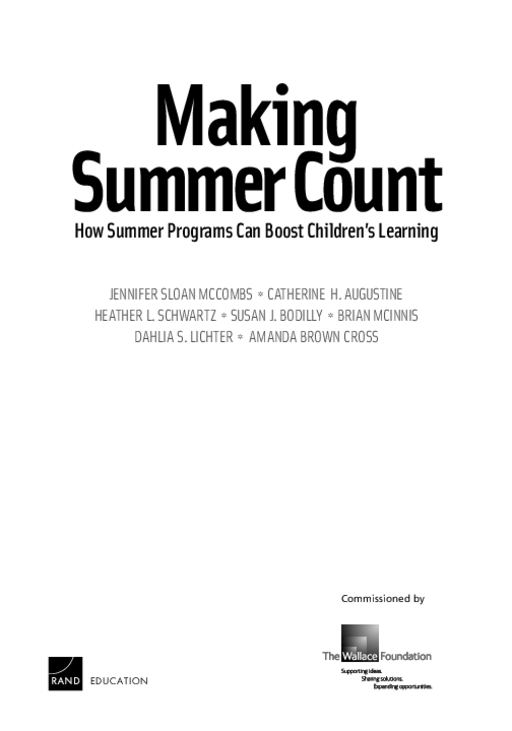Breadcrumb
- Wallace
- Reports
- Making Summer Count How Summer P...
Making Summer Count
How Summer Programs Can Boost Children’s Learning

- Author(s)
- Jennifer Sloan McCombs and Catherine H. Augustine
- Publisher(s)
- RAND Corporation
- DOI Link
- https://doi.org/10.7249/MG1120
Summary
How we did this
This study examined factors that influence urban school districts’ student achievement during the summer. It drew on existing literature, program cost data, and interviews with leaders of national organizations, summer learning providers, school districts, and city governments.
Summer learning programs have the potential to improve academic and other outcomes for children.This is especially true for those from families that lack access to educational resources when school is out of session. It’s also true for students who may need more time to get on top of academics.
This RAND Corp. study finds evidence that a range of summer learning programs could help. The list includes voluntary, mandatory, and reading-at-home programs.
For school districts considering investing in summer learning, the authors offer these recommendations:
- Commit to high-quality staffing and early planning.
- Use practices that boost the chances of program success. These include smaller class sizes, individualized instruction, and close alignment with the school-year curriculum.
- Make the most of partnerships with community organizations.
- Think creatively about funding sources.
RAND also offers recommendations for policymakers and funders. Among them:
- Support stable funding for programs.
- Provide clear guidance about combining funding sources to finance summer programs.
- Invest in rigorous research on matters such as the programs’ academic and non-academic effects on children.

Although there are many small summer learning programs in urban districts, few districts provide full-day academic and enrichment summer programs for their entire low-performing or high-need populations.








